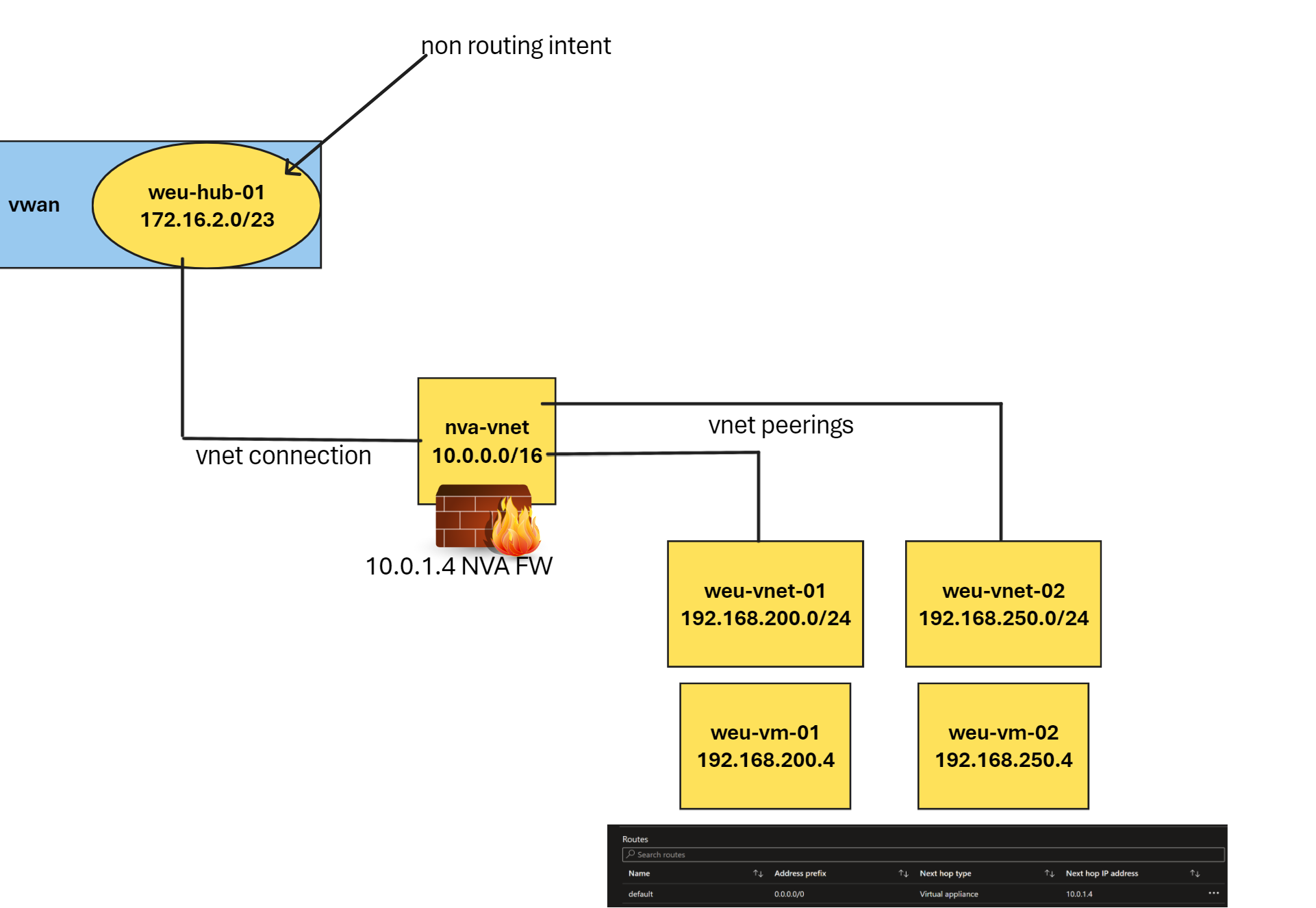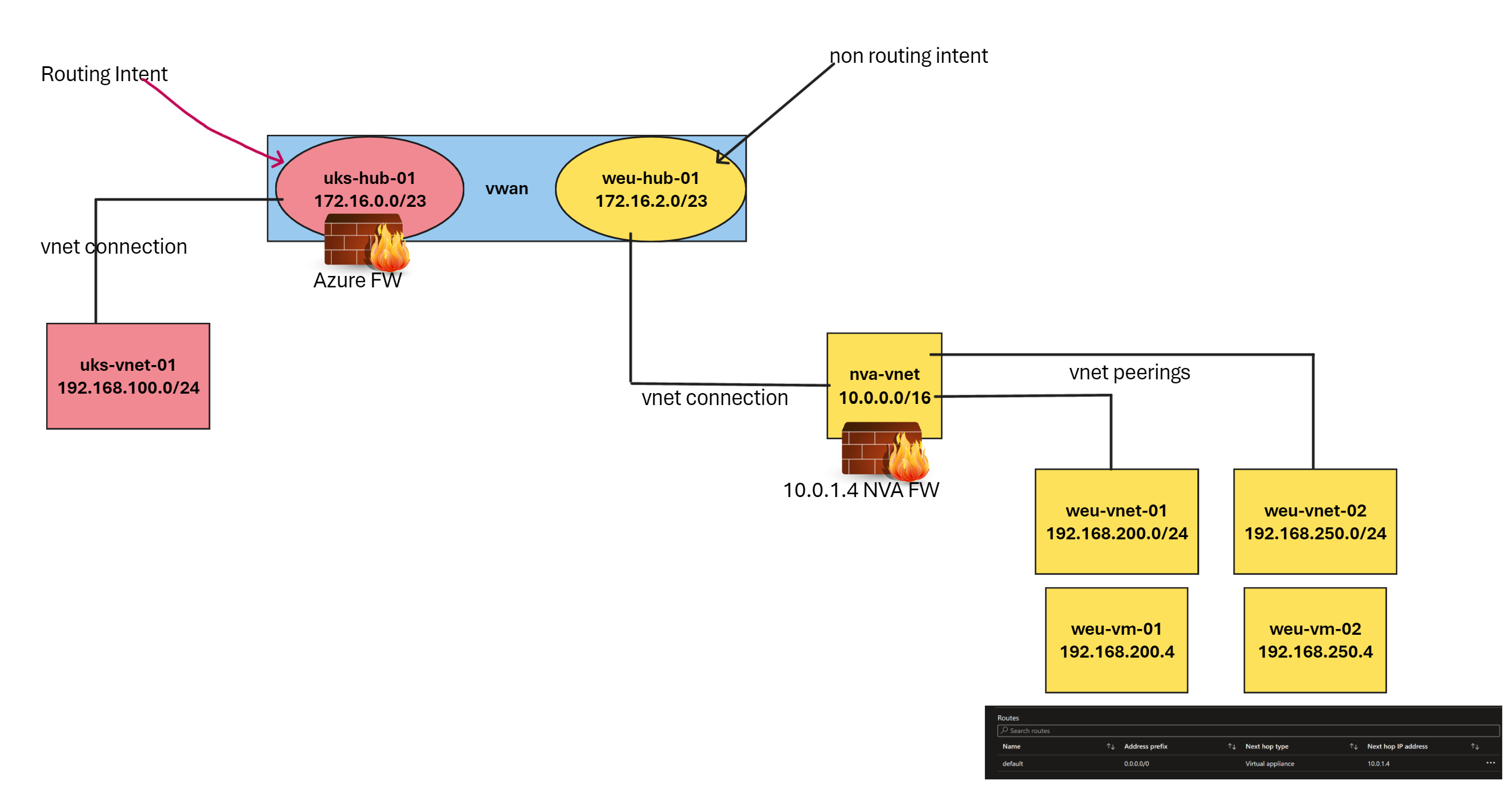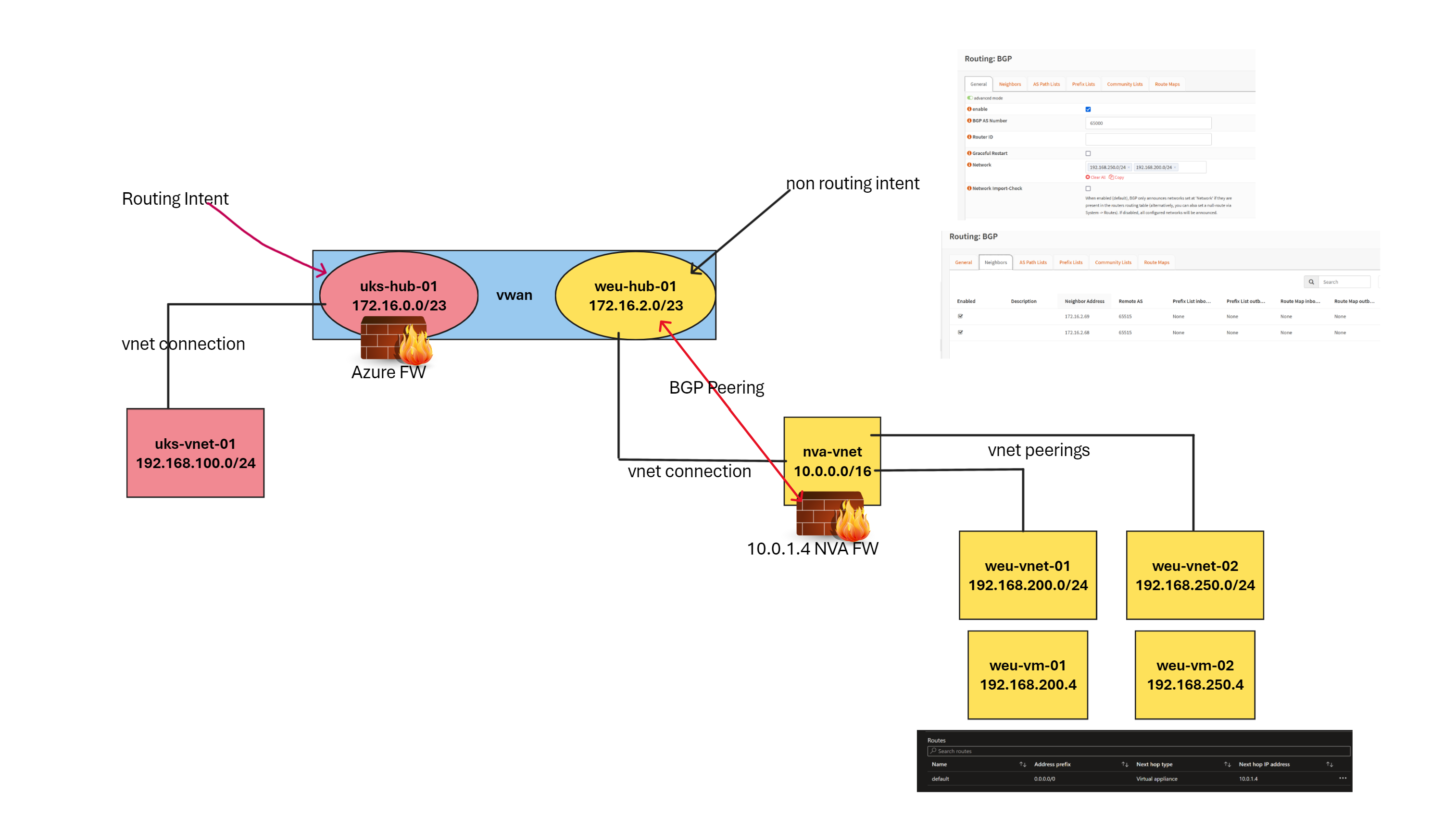Can You Mix and Match Topologies in Azure Virtual WAN?
Background:
A colleague asked me an interesting question about an Azure Virtual WAN scenario their customer was facing. The customer is using Azure Virtual WAN with a single virtual WAN hub, which was placed in the West Europe region, and this hub had been deployed before Azure Virtual WAN routing intent was available (https://docs.microsoft.com/en-us/azure/virtual-wan/virtual-wan-routing-preference-overview). The customer had deployed a number of virtual networks in West Europe and was using a tiered vnet model in West Europe https://learn.microsoft.com/en-us/azure/virtual-wan/scenario-route-through-nva. The customer now wanted to deploy a new Virtual WAN hub in the UK South region, place an Azure Firewall in the UK South vwan hub and enable routing intent on the UK South, whilst leaving the configuration of the West Europe as is. Some of the questions the customer had were:
-
The customer wanted to know if they could use the new Azure Virtual WAN routing intent to route traffic from the UK South virtual networks to the West Europe virtual WAN hub and to the West Europe tiered virtual networks.
-
The customer wanted to know if they could have some virtual networks connected to the virtual WAN hub using the old topology and some virtual networks connected to the virtual WAN hub using the new topology.
-
The customer wanted to know if they could mix and match topologies in Azure Virtual WAN is a supported configuration.
Topology:
Current Topology:
TThe existing topology, as depicted below, consists of a single virtual WAN hub in West Europe and several virtual networks in the same region. The customer is employing a tiered vnet model in West Europe to connect the virtual networks to an ‘NVA vnet’, which is subsequently linked to the West Europe virtual WAN hub. The customer has implemented Palo Alto Firewalls in the West Europe ‘NVA vnet’.

Proposed Topology:
The proposed topology, illustrated below, involves the deployment of a new virtual WAN hub in UK South and the integration of an Azure Firewall into the UK South virtual WAN hub. The customer intends to use the new Azure Virtual WAN routing intent to route private traffic to UK South hosted spoke virtual networks and to the West Europe tiered virtual networks, with internet egress via the Azure Firewall in the UK South virtual WAN Hub. The customer plans to retain the existing configuration of the West Europe virtual WAN hub and virtual networks, without configuring routing intent.

Summary:
Short Version:
The customer can indeed utilize the new Azure Virtual WAN routing intent in the UK South virtual WAN hub while continuing to use the tiered vnet model in the West Europe region. Traffic will be correctly routed across regions, i.e., vnet to vnet traffic across regions will be directed via the Palo Alto firewalls in the NVA vnet in West Europe and via the Azure Firewall in the UK South virtual WAN hub (dependent upon the necessary firewall rules permitting the traffic). The customer can mix and match topologies in Azure Virtual WAN. This is facilitated by the BGP Peering feature in Azure Virtual WAN, which allows the customer to use the new Azure Virtual WAN routing intent in the UK South virtual WAN hub and continue to use the tiered vnet model in the West Europe region. The BGP peering feature enables the customer to mix and match topologies in Azure Virtual WAN.
Final Toplogy:

-
To re-create this I used an OpnSense firewall (customer is using Palo Alto) in West Europe and an Azure Firewall in UK South. Notice the BGP peering between the NVA and the Virtual WAN Hub in West Europe.
-
After establishing the BGP peering the OpnSense firewall is then configured to advertise the spoke virtual network CIDR ranges to the virtual WAN hub. Also note the Network Import check is disabled in the BGP configuration on the OpnSense firewall, this is to ensure we can advertise the manually added routes, which do not exist in the routing table.
Longer Version:
Actually, this will be very short. Whilst investigating I discovered that this can be done with some very convoluted static routing. I’m not going to go into the details of this as it’s not a supported configuration and I don’t want to encourage anyone to do this. The supported way to achieve this is to use the BGP peering feature in Azure Virtual WAN https://learn.microsoft.com/en-us/azure/virtual-wan/scenario-bgp-peering-hub. The BGP peering feature allows the customer to use the new Azure Virtual WAN routing intent in the UK South virtual WAN hub and continue to use the tiered vnet model in the West Europe region. The BGP peering feature allows the customer to mix and match topologies in Azure Virtual WAN.